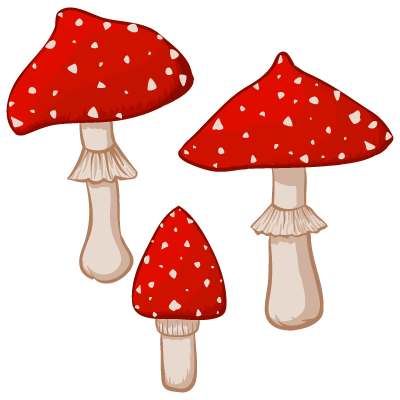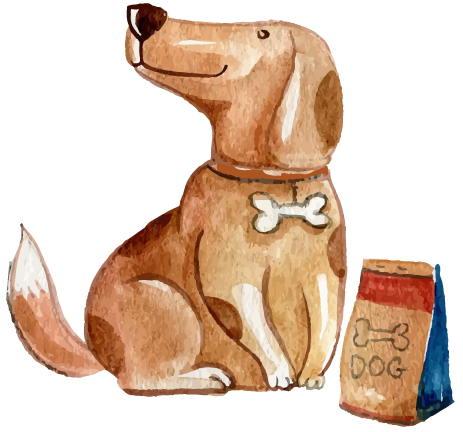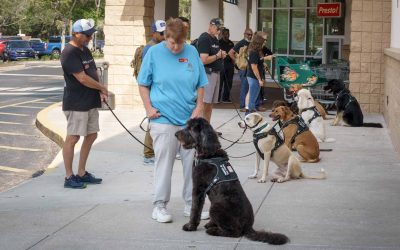
Bond
The first goal for the veteran and their K9 Partner is to bond until their training class starts. The only thing you will need to do until training begins is to teach manners such as:
- OFF
- NO
- LEAVE IT
Your basic training class will teach you and your dog obedience. Do not get ahead of yourself.
Expectations
Be prepared, your dog may whine, your dog may chew on things or he/she may have an accident in the house. We are providing you with this dog free of charge, and you cannot expect them to be trained. These dogs are being rescued from animal control centers, private owners, rescue facilities as well as dog breeders. They may come with some baggage of their own and will need their own adjustment period to learn about their new family and their new home.
We can’t reiterate enough, your dog does not come trained. They may or may not know a few commands, but they have not as yet had any training by K9 Partners for Patriots.
Until you are told when your class starts, the goal for you now is to bond and learn to trust each other. A great form of bonding, is brushing the dogs hair, playing fetch, going for walks or even just lying with your dog and watching the television.
The dog needs to learn your triggers, and we want this bonding time between you, the veteran, and the dog.
Meal Time
Until you know your dog’s habits, feed your dog in their crate.
Please feed your dog twice a day – leaving food down for 20 minutes, then picking it up.The purpose for this, is that it will help further assist you in housetraining your dog. Since it will be getting fed the same times each day, he / she will need to go out around the same times each day. Another reason for this is that it allows your dog to know that the food comes from “you” and only when you decide. He or she will more likely see you as the ‘leader’, and respect you more. You also, control how much your dog eats, which will help regulate his/her weight.
Do not feed your dog from the table. Your dog will be going out with you to restaurants etc. and your dog cannot beg from the table. During your graduate program you will be learning where your dog would be lying in different restaurant scenarios. Table scraps are also not always good for your dog as we eat so much processed food these days. If you want to give your dog a “healthy” food (see list), put in their food bowl or give the special treat away from the table.
If your dog is eating his/her food fast (as in inhaling the food in seconds) you may need to get the dog a "slow feed" bowl that will help him/her eat slower and digest their food better. Your local pet stores have them.
Range feeding, or free feeding is when you place food out and leave it and keep filling it for your dog to pick at it throughout the day. The problem with this method is that, if your dog is not housebroken, this will only make it more difficult to train, you also run the risk of your dog becoming obese.
Always let your dog rest after eating. If you have a medium to large dog, they should rest approximately an hour before taking them outside to exercise. The reason behind this is that you want to prevent canine bloat.
Canine Bloat (gastric dilatation volvulus) is the accumulation of gas in the stomach. This accumulation of gas puts pressure on the diaphragm, which in turn makes it very difficult for the dog to breathe. The stomach will also twist, causing terrible shock and rapid death.
Crate Training
Since dogs are den animals, the crate becomes a safe place for the dog.
The crate should be placed in your bedroom next to your side of the bed. Until you and your K9 partner have adjusted, the crate door should be locked while sleeping. Once you are assured that your dog is house trained, and you can trust your dog to be loose at night, you would then leave the crate door open so the dog can move freely in the bedroom sleeping next to the bed or on the bed with you. This will then allow the dog to wake you from nightmares, flashbacks etc.
Whenever you cannot watch your dog, you need to put him or her in the crate. So this means if you go out and can’t take him/her with you, the dog goes into the crate. If you need to do something in the house and can’t watch the dog, put the dog in the crate. If you come to us saying the dog chewed on your sneakers, or the remote control, we will ask were you watching it, and if you say no, we will then say why wasn’t your dog in the crate?
The crate should never be used for punishment. You want your dog to love the crate and not fear it. It should be their safe haven.
Do not put a bed in the crate until you determine that the dog is not a chewer. You do not want the new dog bed in pieces. Do not leave leashes, collars or vests on the top of the crates; if the dog is a chewer, those items and anything you put on the crate will be ruined.
Bathroom Habits
Your new buddy is adjusting to new surroundings (coming from animal services, breeder, private person or a rescue facility) plus adjusting to their new veteran. They may or may not be housetrained (that is another reason for crate training). They may have an accident as they adjust to you and their new home. If they have an accident and you did not see them in the act, do not punish, scold, or yell at the dog. Simply clean it up and take them outside. If you catch them in the act, again no yelling, tell them no and take them outside to where you want them to go potty.
Your dog should be taken out when waking up, and after eating. If you see the dog going to the door or walking in circles like they are looking to for somewhere to go, take them out. Be aware of your dog’s body language. It will take some time but you will learn.
When your dog goes to the bathroom outside, praise him or her. It is all about positive reinforcement and consistency.
If you do not have a yard that is fenced, take your dog out to use the bathroom on a flexi-leash. This will allow the dog to correlate that the flexi-leash is for the bathroom, and the leather leash is for working.
Give plenty of time to wander on their leash. You will learn their triggers for going to the bathroom as you both adjust. Standard feeding times will also help in determining their needs to go out.
Vehicle Safety
Your Dog should always be restrained when put in your car/truck. Use the harness/ service vest to attach to the seatbelt attachment and/or zip line. You do not want your dog being a projectile should you slam the brakes or have an accident.
Do not let your dog’s head hang outside of the window. The reason for not doing this, is if you should stop quickly, or get into an accident, the dog could fall out of the window or injure their trachea.
- NEVER, NEVER PUT YOUR DOG IN THE BACK OF A PICKUP.
- NEVER, EVER LEAVE YOUR DOG IN A HOT CAR.
Taking Your K9 Buddy Out
While in the Basic Training Class, only take your dog to dog friendly places until the dog has been completely trained and you have been certified. Dog friendly, places would be the following:
- Lowes
- Home Depot
- Tractor Supply and
- any Pet stores.
K9 Equipment
Do not leave training equipment (leashes, gentle leaders, martingales or pinch collars) on your dog when you are not with them. They should only wear their flat collar when you are not training them. Their rabies tag and/or microchip tag should be on their flat collar. Do not leave any equipment on their crate as they can then chew it.
Toys and Playing with Your Dog
- No rawhide
- No rope toys
- No raw bones (they splinter)
Watch toys that have squeakers in them as they can be chewed and the squeaker swallowed.
Good toys: Kong products, balls, elk antlers (whole) nyla bones and jumpbones. Buy the toy that fits your dog’s size. Some dogs like to play with a soccer ball, basketball or a ball with a handle on it.
DO NOT allow your dog to play bite. Tell them “no bites”. If it persists, place hand over top portion of month and squeeze their top lips until they bite themselves and say “no bites”. Be consistent in the correction.
Toxic Foods
Chocolate, Coffee, Corn on the Cob, Grapes, Raisins, Macadamia Nuts, Onions, Chives, Persimmons, Peaches, Plums, Tobacco, Yeast and Apple Seeds and Xylitol.
- Xylitol is a sugar alcohol found in gum, candies, baked goods and other sugar substituted items. Xylitol is extremely toxic to dogs. Even small amounts can cause low blood sugar, seizures, liver failure and even death.
- Evape Electronic Cigarette Juice is HIGHLY TOXIC to dogs!
Foods to Avoid

Avocado – contains Persin which can cause diarrhea, vomiting and heart congestion
Cooked bones – can splinter easily when chewed.
Candy/Chewing Gum – contains sugar as often contains Xyliotol which can lead to over-release of insulin and kidney failure.
Cat food – protein and fat levels are too high for your dog and not healthy.
Citrus Oil Extracts – can cause vomiting.
Fat Trimmings – can cause pancreatitis.
Garlic – okay in small amounts and even beneficial for flea treatment. Large amounts can be risky as it is related to onions.
Hops – ingredient in beer that can be toxic to dogs. Can cause panting, an increased heart rate, fever, seizures and even death.
Liver – in small mounts only. Avoid feeding to much liver as it contains too much Vitamin A which can adversely affect your dog’s muscles and bones.
Dairy – dogs are lactose intolerant. Can cause some smelly farts and nasty cases of diarrhea.
Mushrooms – just as the wrong mushroom can be fatal to humans, same applies to dogs. Don’t mess with them.
Rhubarb and Tomato leaves – contain oxalates which can adversely affect the digestive, nervous and urinary systems.
Raw Fish – another Vitamin (Thiamine) deficiency can result from the regular consumption of raw fish – loss of appetite will be common followed by seizures and then in rare instances, death.
Salt – can lead to an imbalance in electrolyte leves, dehydration and potentially diarrhea.
Spices containing Capsaicin – found in chili powder, paprika and just about any other pepper is an irritant for mammals of all shapes and sizes.
String – not a food in itself, foods can often contain or be similar to string (such as meat you have wrapped for the oven). String can get stuck in their digestive tract and cause complications.
Sugar – applies to any food containing sugar. Too much sugar can lead to dental issues, obesity and even diabetes.
Healthy Foods/Treats for Your Dog

- Apples (no seeds)
- Asparagus
- Bananas
- Beans
- Beef
- Blackberries
- Blueberries
- Broccoli
- Brussel Sprouts
- Cabbage
- Cantaloupe
- Carrots
- Celery
- Cheese
- Chicken
- Corn
- Cranberries
- Cucumber
- Eggs
- Flax Oil
- Fish Oil
- Honeydew Melon
- Kiwi
- Lamb
- Leafy greens
- Mango
- Nectarines
- Oats
- Olive Oil
- Papaya
- Parsley
- Pears
- Pineapple
- Pork
- Pumpkin
- Potatoes (no peelings)
- Quinoa
- Raspberries
- Rice
- Salmon
- Squash
- Strawberries
- Sweet Potatoes
- Turkey
- Venison
- Watermelon (no seeds)
- Yogurt (plain only)
- Zucchini
Be Realistic and Patient
Hope that this answers a lot of your questions. Again, your goal during this transition period prior to your class beginning is to bond with your new “partner”. Don’t set your expectations too high. Be realistic and know that this process is just as new for your dog as it is too you.





